Day 2 :
Keynote Forum
Levente Deak
Al Zahra Hospital Dubai, UAE
Keynote: Rhinofacial conidiobolus coronatus fungal infection presenting as an intranasal tumor
Time : 08:30-09:10

Biography:
Levente Deak studied medicine at Semmelweis University and completed his fellowship in Northwestern University Chicago (USA) with a sub specialty interest in the rhinology field. During academic years he conducted extensive research, which was honored by the Spoendlin and Bekesy awards. Research is still the cornerstone of his medical practice, and his papers are published in many international scientific journals. Levente has conducted numerous audits and presently is involved in accreditation program for ENT residents training program. He is the organizer for the “Rhinology Update Course” which is held annually.rnAs an internationally accredited surgeon, Levente has been an ENT consultant for over the past 10 years. He is working as the head of department at Al Zahra Private Hospital Dubai for more than 3 years
rn
Abstract:
Conidiobolomycosis is a rare form of zygomycosis infection and mostly found in the tropical rain forest areas. Our 42 years old male patient visited the middle part of the India for few days and 3 months later developed nasal blockage with severe epistaxis. He was seen initially in a primary care center and then referred to our hospital with the diagnosis of epistaxis and a suspected nasal tumor.rnCT and MRI reports confirmed the presence of a highly vascularized mass in the right nasal cavity. After surgical excision, the histopathology report confirmed Conidiobolus coronatus infection and granuloma formation with hyphae surrounded by an eosinophilic sheet (the Splendore-Hoeppli phenomenon). rnInitial treatment with Amphotericin B treatment was unsuccessful, and the infection progressed leading to both external and intranasal deformity. This necessitated further tumor mass excision and reconstruction. After receiving the antifungal susceptibility profile, a new combination therapy of itraconazole with fluconazole was started. Following 18 months of oral antifungal treatment, the disease was cured. rnFungal infection in the nose is commonly seen in immunocompromised or diabetic patients, however Conidiolomycosis infection has been mostly reported in healthy young adults presenting as nasal obstruction with facial swelling and massive nasal bleeding. With the advent of global travel today, this infection could potentially present anywhere.rnThe goal of this presentation is to put the Conidiobolomycosis infection into the differential diagnosis panel in the case of nasal obstruction
rn
- Case Reports Related to Oncology | Dentistry | Pediatrics | Orthopedics| Gastroenterology| Epidemiology | Otorhinolaryngology
Session Introduction
Ashraf Rasheed
University of South Wales, United Kingdom
Title: Laparoscopic resection of gastric gastrointestinal stromal tumor is safe and effective

Biography:
Ashraf Rasheed studied Medicine at the Royal College of Surgeons in Ireland and awarded Lyons Memorial Medal & McDonnell’s Prize for Surgery. He has completed his basic Surgical Training in Dublin before moving to UK to join the Higher Surgical Training Scheme. He has worked as a minimal access upper GI Consultant Surgeon to Dorset County Hospital and his current position is a Lead Laparoscopic/Oesophago-Gastric Consultant Surgeon to Aneurin Bevan University Health Board. He holds the fellowships of the Dublin and London Royal Colleges as well as American College of Surgeons. He is an expert in the field of upper GI surgery and holds a distinguished Personal Chair of Surgery from University of South Wales.
Abstract:
Introduction- Minimal access surgical therapy is the emerging gold standard for treatment of gastric gastrointestinal stromal tumor (GIST). Despite the above there continue to be lack of guidance or standardization of the techniques. Aims- To assess safety, effectiveness and functional outcomes of minimal access surgical strategy for resectable gastric GISTs and attempt to propose a function-based technical guidance. Methods- Thirty four symptomatic gastric GISTs diagnosed during the years 2006-2010 satisfied the inclusion criteria for minimal access surgical resection. All procedures were performed according to an agreed surgical strategy based on anatomical location of the gastric lesions and proximity to OGJ (Oesophago-Gastric Junction) or GDJ (Gastro-Duodenal Junction). The size, site, histology, resection margin, complications, hospital stay, functional outcome, recurrence rate and survival of the 34 consecutive resections were maintained on a prospective computerized database and had a minimum of 5 years follow up. All entered data was validated by the operating surgeon and the reporting pathologist. Results- Twenty four cases were completed by endoscopic-assisted laparoscopic wedge resection. Six were close to OGJ and underwent a laparoscopic intra-gastric resection. The remaining 4 were close to the pylorus, 3 underwent laparoscopic trans-gastric excision via an anterior gastrotomy and the fourth was exophytic on the posterior wall and underwent an extra-gastric tangential excision. Conclusion- Most gastric GISTs are resected by simple tangential excision. Lesions close to oesophago-gastric junction are best suited for laparoscopic end-gastric excision to ensure complete resection without compromising the oesophageal patency or sphincteric competency. Juxta-pyloric endophytic lesions are best treated via an anterior gastrotomy or by extra-gastric tangential excision if exophytic. This anatomic and function -based strategy for minimal access surgical resection of gastric GISTs conserve the organ, preserve the function leading to a quicker recovery and better quality of life without breaching the oncological principles. Advantages- 1. Less perioperative pain 2. Early ambulation 3. Better return of full pulmonary functions 4. Less chances of developing DVT and pneumonia 5. Early return of bowel functions (less narcotic use, early ambulation) 6. Lower incidence of incisional hernia Potential disadvantages of laparoscopic Whipple operation 1. Longer operating time 2. More and earlier post-operative atelectasis
Sura Ali Ahmed Fuoad
Gulf Medical University, UAE
Title: Hypohydrotic ectodermal dysplasia- a case report with review of literature
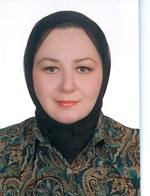
Biography:
Sura Ali Ahmed Fuoad Al-Bayati received her Doctoral Degree in Oral Medicine (Ph.D.) from Baghdad University, Iraq. She completed her Bachelor and Master Degree in Oral Medicine (MDS) from Baghdad University, Iraq .She was the faculty of dentistry since 1988 in Baghdad University, Iraq till 2006, up to date in Gulf Medical University, UAE. Currently she is the Associate Dean for College of Dentistry, Gulf medical university since 2010. She is an Associate professor of Oral medicine
Abstract:
Ectodermal dysplasia is a hereditary disorder caused by disturbances in the ectoderm during the early embryonic stage of development. Ectodermal derivatives like hair, nails, teeth and sweat glands are usually affected. Anodontia or hypodontia are the most common dental features associated with ectodermal dysplasia. Peg shaped teeth and cleft lip/palate are the other features that have been reported. Taurodontism has been reported in very few instances in the available literature. The aim of report is to present to the reader the radiological features of taurodontistism occurring in ectodermal dysplasia which is extremely rare
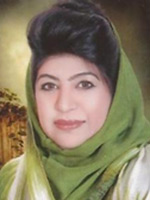
Biography:
Awatif Juma Al Bahar is a Medical Director, Senior Consultant, Obstetrics/Gynecology, Reproductive Endocrinology at the Dubai Gynecology & Fertility Centre, Dubai Health Authority. After completing her graduation, she has specialized in Obstetrics & Gynecology from the German Board, Koln and she has a Membership in Endocrine and Infertility from Academic University in Bonn. She has been selected in 2002 in Dubai Excellency Program. Her name is mentioned in the UAE Book of Special Personalities of All Fields (i.e., medicine, politics, art etc). She has been awarded by his highness Amro Mosa in 2004 as to be the Leader in Medicine and Social Services. She was also awarded as Hero of Health Care in 2012 by his highness ruler of Ajman. She has held multiple posts in various capacities in the OBS/GYN and she is currently the Director of the IVF Board of the Ministry of Health of UAE. She is the Chairperson of the Emirates Obstetrics/Gynecology & Fertility Forum (EOFF) and a regular speaker on UAE activities in mother and child health via media: Television, radio, ladies association, universities etc. She has many publications on polycystic ovaries and infertility.
Abstract:
Cervical cancer is the third most common cancer in females worldwide, with an estimated 530,000 cases in 2008.Approximately 85% of the global burden occurs in developing regions. Worldwide HPV causes-5% of all new cancers occurring in males & females annually .Approximately 80% of all people are infected by ≥ type of HPV at some point in their life time. Globally HPV is responsible for- >Virtually 100%of cervical cancer >88% of anal cancers >70% of vaginal cancers >43% of vulvar cancers >50% of penile cancers >26% of oropharyngeal cancers >Almost all cases of genital warts and RRP Benefits of adding males to current female HPV Vaccination- >Both males & females suffer a substantial burden of HPV-related cancers and diseases >HPV-related disease incidence is increasing in both genders >HPV is readily transmitted between males & females >No standardized screening programs, except for cervical cancer, to detect HPV-related cancers in males and females >Only HPV Vaccine licensed for use in males. More details will be discuss during the lecture
Levente Deak
Al Zahra Hospital Dubai, UAE
Title: Rhinofacial conidiobolus coronatus fungal infection presenting as an intranasal tumor

Biography:
Levente Deak studied medicine at Semmelweis University and completed his fellowship in Northwestern University Chicago (USA) with a sub specialty interest in the rhinology field. During academic years he conducted extensive research, which was honored by the Spoendlin and Bekesy awards. Research is still the cornerstone of his medical practice, and his papers are published in many international scientific journals. Levente has conducted numerous audits and presently is involved in accreditation program for ENT residents training program. He is the organizer for the “Rhinology Update Course†which is held annually. As an internationally accredited surgeon, Levente has been an ENT consultant for over the past 10 years. He is working as the head of department at Al Zahra Private Hospital Dubai for more than 3 years
Abstract:
Conidiobolomycosis is a rare form of zygomycosis infection and mostly found in the tropical rain forest areas. Our 42 years old male patient visited the middle part of the India for few days and 3 months later developed nasal blockage with severe epistaxis. He was seen initially in a primary care center and then referred to our hospital with the diagnosis of epistaxis and a suspected nasal tumor. CT and MRI reports confirmed the presence of a highly vascularized mass in the right nasal cavity. After surgical excision, the histopathology report confirmed Conidiobolus coronatus infection and granuloma formation with hyphae surrounded by an eosinophilic sheet (the Splendore-Hoeppli phenomenon). Initial treatment with Amphotericin B treatment was unsuccessful, and the infection progressed leading to both external and intranasal deformity. This necessitated further tumor mass excision and reconstruction. After receiving the antifungal susceptibility profile, a new combination therapy of itraconazole with fluconazole was started. Following 18 months of oral antifungal treatment, the disease was cured. Fungal infection in the nose is commonly seen in immunocompromised or diabetic patients, however Conidiolomycosis infection has been mostly reported in healthy young adults presenting as nasal obstruction with facial swelling and massive nasal bleeding. With the advent of global travel today, this infection could potentially present anywhere. The goal of this presentation is to put the Conidiobolomycosis infection into the differential diagnosis panel in the case of nasal obstruction
Deanne Soares
Royal Prince Alfred Hospital, Australia
Title: A rare case of renal cell carcinoma tumor seeding along a needle biopsy tract

Biography:
Deanne Soares is a senior surgical resident at Concord Repatriation General Hospital in Sydney, Australia. She has completed a Masters of Surgery from The University of Sydney and a Masters of Health Leadership and Management from the University of Wollongong. She is currently engaged in multiple research projects in the fields of surgery and training and education
Abstract:
Percutaneous biopsies have been found to be useful in the diagnosis and management of renal masses and have a very low complication rate. However, one possible hazard of this is tumour seeding along the tract, but this is so rare in renal cell carcinoma (RCC) that its frequent use in the assessment of indeterminate renal masses has been warranted. We report a case of tumour seeding caused by percutaneous biopsy of a papillary renal cell carcinoma detected on pathological assessment of the partial nephrectomy specimen in a 50-year-old male. A review of the literature found that up until 1991, there were only 5 reported cases of RCC tract seeding and in 2013 there were a further 3 cases reported. In general, tract seeding relates to the amount of disruption of the tumour capsule (needle calibre, number of punctures), pressure of egress at the puncture site (for example, cystic masses or escaping haematoma), whether tumour cells are dropped from the needle on its withdrawal (failure to maintain negative pressure, burred needle tip), and the ability of tumour cells to survive when deposited into a scar. This is one of only a few contemporary case reports of RCC seeding along a percutaneous biopsy tract. Whilst this complication is so rare that it does not merit a need to discontinue the use of percutaneous biopsy of renal masses, it certainly highlights the possibility of tract seeding as a potential hazard. As such, certain considerations, such as appropriate patient selection, the use of correct equipment and suitable biopsy technique, should be made to minimise the risk of this complication
Md Ashraful Islam
James Graham Brown Cancer Center, USA
Title: Novel homozygous polymorphism concomitant with compound Raq1 mutation leads to ‘Omenn Syndrome’
Biography:
Will be updated soon!!!
Abstract:
Rationale: ‘Omenn Syndrome’ is an atypical prototype of Autosomal Recessive form of severe combined immune deficiency (SCID). Patient usually presents with inappropriate exaggerated immunological response featuring dermatitis, hepatosplenomegaly and increased susceptible to infection due to unsecured deficiency of immunoglobulin and T-cell receptor gene recombination machineries. Methods: We report genetic basis of casein ‘Omenn Syndrome’. Results: This is a patient of mixed Asian parents underwent haploidentical paternal stem cell transplantation for a very rare immunological disorder “Omenn Syndromeâ€. The patient was engrafted and subsequently developed secondary myopathy involving diaphragm as a very rare presentation of Graft Versus Host Disease (GVHD). Fortunately, the patient responded well with steroids winning off of the ventilator. Thereafter, patient has been through several episodes of GVHDs which is being taken care of by the University of Louisville Pediatric Oncology branch. The genetic information of this patient, a younger healthy sibling and parents were investigated for exploring the exact causes of the Omenn Syndrome. We conducted a mutation analysis of Rag1 by PCR amplification of exon 2 and by bi-directional sequencing of the R142X and V779M variants. We have noticed a heterozygous sequence change of C>T in Rag1 resulting in a premature stop codon at Arg142Stoop in mother and two children’s genetic sequence. In addition a heterozygous sequence substitution of G>A in Rag1 gene resulting in V779M mutation observed in father and affected child. We have also determined that the patient is homozygous; father and two children (affected & healthy) are heterozygous for a known functional polymorphism of K820R in Rag1 gene. Conclusions: Rag1 and Rag2 mutation remain the major cause of ‘Omenn Syndrome’ although many other genes can be contributed to the recombination defects. After careful analyzing the genetic information of this patient’s family, we propose for the first time compound heterozygous mutation along with homozygous polymorphism may be the reason for ‘Omenn Syndrome’ at least in this patient. Further clarification of this functional K820R polymorphism will shed light on better understanding of this disease
Jehad Al Sukhun
MedCare Hospital & Luzan Medical Center, UAE
Title: Bridging the Gap: Reconstruction of Soft and Hard Tissues in Oral & Maxillofacial Surgery and Implantology
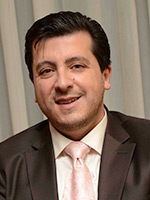
Biography:
Jehad Al Sukhun is a British / Jordanian oral and maxillofacial surgeon with a Master’s degree in oral and maxillofacial surgery from the University of Manchester and a PhD from the University of London in the United Kingdom. He has gained a number of fellowships and professional memberships in the United States, United Kingdom and Australia. During his PhD studies at the University of London, he obtained in-depth knowledge and experience in maxillofacial Implantology and computer aided surgery using Finite Element Analysis. He worked at well reputed academic University Hospitals in the UK e.g. Royal Manchester University Hospital, Royal Surrey County Hospital and a UAE University College, Dubai. He has gained significant clinical experience in specialized dentistry, Implantology, oncology, trauma, Orthognathic surgery, reconstructive and cosmetic plastic surgery. He developed particular interest on the use of bioresorbable plates for reconstructing orbital fractures. During his work in the field of oral and maxillofacial surgery, he produced more than 45 papers published in international peer review journals. He on the editorial board of a number of well recognized journals in Oral and maxillofacial surgery
Abstract:
Bone regeneration is a complex, well-orchestrated physiological process of bone formation, which can be seen during normal fracture healing, and is involved in continuous remodeling throughout adult life. However, there are complex clinical conditions in which bone regeneration is required in small or large quantity, such as for loss of cortical bone at the time of implant placement, loss of bone due to peri implantitis, skeletal reconstruction of large bone defects created by trauma, infection, tumor resection and skeletal abnormalities, or cases in which the regenerative process is compromised, including avascular necrosis, atrophic non-unions and osteoporosis. Currently, there is a plethora of different strategies to augment the impaired or 'insufficient' bone-regeneration process, including the 'gold standard' autologous bone graft, free fibula vascularized graft, allograft implantation, and use of growth factors, osteoconductive scaffolds, osteoprogenitor cells and distraction osteogenesis. Improved 'local' strategies in terms of tissue engineering and gene therapy, or even 'systemic' enhancement of bone repair, are under intense investigation, in an effort to overcome the limitations of the current methods, to produce bone-graft substitutes with biomechanical properties that are as identical to normal bone as possible, to accelerate the overall regeneration process, or even to address systemic conditions, such as skeletal disorders and osteoporosis. Over the past year we have seen new products approved and released to the market. And the pipeline of therapies on the horizon continues to expand. This paper demonstrates the various approaches, material, implants produced by various commercial companies to reconstruct soft and hard tissue defects and its application in implant dentistry and oral surgery
Mohamed Abbasy
Hamad Medical Corporation, Qatar
Title: Trendelenburg position associated with a serious complication, a clinical warning

Biography:
Mohamed Abbasy is currently working as an emergency medicine clinical fellow in Hamad Medical Corporation – Doha – Qatar. He successfully completed the Injury Prevention Research and Training Program held in University of Maryland, School of Medicine, Baltimore, Maryland, USA. He has attended in the R Adams Shock Trauma Center, University of Maryland, School of Medicine, Baltimore, Maryland in 2008. He finished his training in emergency medicine as successfully awarded the fellowship of Egyptian Board of Emergency Medicine in 2009. He has a good experience in working in Gulf region and worked as an assistant Program director of the Saudi Board of Emergency Medicine in Eastern region – KSA in 2013. He successfully passed his membership examination of the Royal College of Emergency Medicine UK in 2014. He is interested in critical care, emergency ultrasound and resuscitation teaching working as instructor of (ACLS- APLS- ATLS- ALS- APLS- STEPs) courses.
Abstract:
Internal jugular central venous catheterization (IJCV) is an everyday practice in the Emergency Department and Trendelenburg position is widely recommended to facilitate such a procedure. Reported complications range from 5% to 20% and include pneumothorax, hydrothorax and injuries to major structures. Here we report a 47 year old male patient, known to have chronic bronchitis and alcoholic liver disease, he presented to the emergency department with a circulatory collapse due to an acute pancreatitis. In trendelenberg position, right IJ CVC was inserted under ultrasound guidance. Post procedure chest X-ray showed right upper lobe lung collapse which progressed after 2 hours into a total lung collapse and hypoxia. Endotracheal intubation with mechanical ventilation was required and subsequent computed tomographic Angiography confirmed in place catheter with no extravasation but a large volume pleural effusion associated with complete lung collapse on the right side. Urgent bedside Bronchoscopy, revealed a large mucous plug occluding the right main bronchus with a smaller one at the right upper branching bronchus both were removed immediately. Repeated chest X-ray after 6 hours showed lung expansion with a dramatic decrease of the volume of pleural effusion. Patient was extubated on day three of admission and left the hospital with a full neurological and respiratory recovery on the seventh day. Such a complication was never reported before. We suggest that prolonged trendelenburge positioning in susceptible patients can be associated with significant morbidities including mucus plug and total lung collapse and maybe it is safer to be avoided in patients with reactive airway disease.
Maha Faden
King Saud Medical City, KSA
Title: Identification of a recognizable progressive skeletal dysplasia caused by RSPRY1 mutations
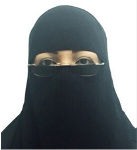
Biography:
Maha Faden is an Assistant Professor at the College of Medicine at Alfaisal University, Riyadh, KSA. She is also Head of the Genetic Unit and Consultant of Pediatrics and Clinical Genetics at King Saud Medical City, Riyadh. After obtaining her medical degree from the King Abdulaziz University, Jeddah, KSA, she completed an internship year at King Abdulaziz Hospital and Oncology Centre. She was certified by the Arab Board and Saudi Board of Pediatrics in 2000. Subsequently, she achieved two fellowships – the first in clinical genetics and dysmorphology at King Faisal Specialist Hospital and Research Center, Riyadh, in 2006, and the second in skeletal dysplasia at the Cedars-Sinai Medical Center, Los Angeles, CA, USA, in 2007 as part of the University of California, Los Angeles Intercampus Medical Genetics Training Program. Since 2012, she has been involved in the newborn screening program run by the Saudi Ministry of Health and has been a regional leader for the Rare Diseases Initiative’s ‘Excellence in Pediatrics’ conference. She is a member of several associations spanning genetics and pediatrics, has spoken at various national and international meetings, and has authored peer-reviewed publications in several international journals.
Abstract:
Skeletal dysplasias are highly variable Mendelian phenotypes. Molecular diagnosis of skeletal dysplasias is complicated by their extreme clinical and genetic heterogeneity. We describe a clinically recognizable autosomal-recessive disorder in four affected siblings from a consanguineous Saudi family, comprising progressive spondyloepimetaphyseal dysplasia, short stature, facial dysmorphism, short fourth metatarsals, and intellectual disability. Combined autozygome/exome analysis identified a homozygous frameshift mutation in RSPRY1 with resulting nonsense-mediated decay. Using a gene-centric ‘‘matchmaking’’ system, we were able to identify a Peruvian simplex case subject whose phenotype is strikingly similar to the original Saudi family and whose exome sequencing had revealed a likely pathogenic homozygous missense variant in the same gene. RSPRY1 encodes a hypothetical RING and SPRY domain-containing protein of unknown physiological function. However, we detect strong RSPRY1 protein localization in murine embryonic osteoblasts and periosteal cells during primary endochondral ossification, consistent with a role in bone development. This study highlights the role of gene-centric matchmaking tools to establish causal links to genes, especially for rare or previously undescribed clinical entities.
Emadia Alaki
King Saud Medical City, KSA
Title: Disseminated salmonellosis and BCGITIS lymphadenitis In a patient with interleukin- 12p40 deficiency
Biography:
Emadia Alaki is currently working as pediatric consultant Allergist & Immunologist and the head of Allergy & Immunology Department, in Pediatric Hospital at King Saud Medical City, Riyadh. She has graduated from King Abdulaziz University and Certified Diploma of childhood (DCH) Co-operation with Edinburgh University, Britain. She was certified by Arab Board from King Faisal Specialist Hospital and has taken fellowship for Allergy and Immunology on the same institution. In 2009, she was completed her fellowship for Allergy and Immunology in Johns Hopkins University, USA. She is active member of several associations in Allergy and Immunology, has spoken at various national and international meetings and conferences, and author of peer-reviewed publications in several international journals.
Abstract:
Interleukin-12p40 deficiency is a very a rare genetic etiology of Mendelian susceptibility to mycobacterial disease (MSMD). They are also susceptible to infection caused by weakly virulent mycobacteria, such as Bacilli Calmette Guérin (BCG) vaccines and environmental mycobacteria. Salmonellosis has been reported in almost half of affected patients. Here, we describe an 18 months old boy with absence of IL12p40 production suffering from recurrent non-typhoidal disseminated Salmonella, oral Candida and severe chest infection. According to our available data, we believe this is the first report case in our institute. Interleukin (IL)-12p40 deficiency is a very rare genetic etiology of Mendelian susceptibility to mycobacterial disease. Patients with IL-12p40 are susceptible to infection caused by, Bacille Calmette Guérin vaccines, environmental mycobacteria and salmonellosis. In this case report, an 18 months old boy with absence of IL-12p40 production is suffering from recurrent dissemination with Non–Typhoid Salmonella (NTS) , persistent fever, swelling, tender, discharge from left axillary lymph node, oral Candida, severe chest infection, recurrent gastroenteritis, septicemia with generalized lymphadenopathy and hepatosplenomegaly and PPD was negative. The patient is a product of apparently healthy family, parents are not consanguinity, he received all vaccinations with 5 siblings two of them are twins and one of those twins had a similar problem. At age of 36 months, the parents discontinued medications soon admitted to ICU and intubated. The culture was positive for group D (NTS), from the left axilla , spleen biopsy and blood. Fine needle aspiration showed no granuloma. NTS is sensitive to ampicillin, cefotaxime, ciprofloxacin and cotrimoxazole. Mycobacterium tuberculosis complex, polymerase cell reaction and culture for acid fast bacilli and all serological tests were negative. Radiologically bilateral multiple necrotic lymph nodes are extending down to the mandibular area, huge anterior mediastinal necrotizing and lower lobe infiltration. Samples were sent to France, showing absence of IL-12p40 production .Treated with TMP/SMX prophylactic according to (NTS) sensitivity and anti tuberculosis for one year and there are remarkable improvements. Gamma Interferon may have been a useful adjunct to antimicrobial therapy in his case. However the family refused to use gamma interferon since the patient improved in all conventional treatment.
Mikito Mori
Teikyo University Chiba Medical Center, Japan
Title: Successful application of laparoscopic and endoscopic cooperative surgery for gastrointestinal stromal tumor with anatomical complexity: Report of two cases

Biography:
Mikito Mori graduate from Tokyo Medical Dental University, Japan in 1997, and he has completed Ph.D. from Chiba University, Japan in 2004. He has specialized in upper gastrointestinal surgery since 2004, and he is working for Department of Surgery, Teikyo University Chiba Medical Center as an assistant professor. He has published some case reports related to gastroenterological surgery in Japan
Abstract:
Local resection is the standard treatment for gastrointestinal stromal tumors (GISTs), and laparoscopic and endoscopic cooperative surgery (LECS) is considered to be a safe and useful procedure because it not only enables dissection of a tumor with minimal extra gastrointestinal wall tissue, but is also suitable for all tumor locations, including duodenal lesion and proximity to the esophagogastric junction or pyloric ring. We herein report our experience of performing LECS for two patients with GIST. Case 1: A 78-year-old man was referred to our department for treatment of a gastric sub-mucosal tumor. Based on chest X-ray and computed tomography (CT) findings, complete situs inversus was also diagnosed. Upper gastrointestinal endoscopy and imaging showed a 45 mm gastric sub-mucosal tumor in the upper stomach near the esophagogastric junction. We performed local resection of the GIST by LECS. Pathological examination revealed that the tumor was an intermediate-risk GIST and the patient was discharged on postoperative day 12. Case 2: A 60-year-old man was referred to our department for treatment of a duodenal sub-mucosal tumor. Upper gastrointestinal endoscopy and imaging showed a 25 mm duodenal sub-mucosal tumor in the posterior wall of the first portion of the duodenum. We performed local resection of the duodenal sub-mucosal tumor by LECS. Pathological examination revealed that the tumor was a low-risk GIST and the patient was discharged on postoperative day 12. LECS can be performed even in patients with anatomical complexity provided the anatomy and vascularization are carefully assessed preoperatively by diagnostic imaging
Narjiss Akerzoul
Mohammed V University, Morocco
Title: Malignant transformation of erosive oral mucosal lichen planus to oral squamous cell carcinoma
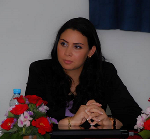
Biography:
Narjiss Akerzoul received her Doctorate of Dental Surgery (DDS) from Mohammed V University of Rabat-Morocco in the year 2011. Later she was working as a General practitioner Dentist in Oral Health Center of Guelmim City, Morocco. Later she completed her Diploma in Biostatistics and Research Methodology during 2014-2015. She has authored and co-authored several International Publications in the field of Oral Surgery and Oral Oncology. She has been an editorial member in Department of Oral and Maxillofacial Surgery of the International Journal of Oral Health and Medical Research (IJOHMR), Reviewer in OMICS GROUP Biomedical Journals. Her research includes Oral Surgery, Oral & Maxillofacial Surgery, Oral Medicine, Oral Oncology, Head & Neck Oncology, Oral Implantology, Oral Infectious Diseases
Abstract:
Introduction: Oral mucosal lichen planus (OMLP) is a chronic inflammatory skin disease, usually benign that affects all areas of the oral mucosa. Its diagnosis is based on the clinical examination and histological analysis. The erosive form presents a risk of malignant transformation from 0.3% to 3%, justifying the strict surveillance of the disease and effective treatment of relapses. Case Report: A 65 years old woman, without specific and non smoking history, reported to the Oral Surgery Department of the Consultation Center of Dental Treatments of Rabat, presenting oral lesions lasting for four years. The intraoral examination revealed the presence of white lesions in the form of plates sitting on the entire right side edge of the tongue with the presence of gingival ulceration in relation to the right premolar-molar area. A biopsy was performed and concluded an erosive oral lichen planus. A first-line treatment combining local corticosteroids and retinoids has been set up; however, a recurrence occurred 7 months after treatment. Another biopsy was performed and concluded an invasive oral squamous cell carcinoma. The patient was referred to the Maxillofacial Surgery Department for expansion and adequate management. Discussion: Malignant transformation of the OMLP is rare and remains a subject of controversy despite numerous studies that have been devoted. It occurs most often on the atrophic and erosive forms. Several assumptions have been suggested to explain this malignant transformation but the chronic inflammation seems to be the key factor. Tobacco and alcohol are well known carcinogenic factors, may contribute to the malignant transformation of the OMLP but it turns out that this disease affects mostly women who have no-smoking Ethylo intoxication. So there must be other factors. The Candida infection and the expression of certain tumor suppressor genes may lead to the malignant transformation of OMLP
Fatima Hamad Al Jneibi
Sheikh Khalifa Medical City, UAE
Title: Early diagnosis in familial glucocorticoid deficiency

Biography:
Fatima Hamad Al Jneibi has completed her MBBS from Faculty of Medical Health Sciences at UAE University in Al Ain and currently doing her pediatric residency at Sheikh Khalifa Medical City (SKMC), R4, Accreditation Council for Graduate Medical Education (ACGME) accredited program.
Abstract:
Familial glucocorticoid deficiency (FGD) is a rare autosomal recessive condition, characterized by marked atrophy of zona fasciculata and reticularis with preservation of zona glomerulosa. Out of more than 50 published cases, 18 patients died as a result of glucocorticoid insufficiency. The main objective of this report is to emphasize the early diagnosis and treatment in our 17 month patient. Her presenting features following an upper respiratory tract infection were hypoglycemia, seizures as well as deep hyper pigmentation of the limbs and lips. A low cortisol concentration, elevated ACTH level and normal electrolytes and aldosterone level all supported the diagnosis of primary glucocorticoid deficiency. Parents were counseled about the diagnosis, management and the lifelong requirement of steroids. FGD is an easily treatable disease when recognized but frequently missed due to a non-specific presentation. FGD is a treatable disease, delayed diagnosis and treatment can lead significant morbid.
Hemail M Alsubaie
Taif University, KSA
Title: Giant chest teratoma with huge spleen tumor: A very rare case

Biography:
Hemail M Alsubaie is a Medical Student at Taif University for Bachelor of Medicine and Surgery (MBBS). He has attended The CME/PD activity of the Basic Operative Surgical Skills 2013, the 10th Annual Saudi General Surgery Society Congress 2015 and also attended Seventh Medical Profession Day in 2015. He has presented in the First Scientific Symposium of Medical Students at College of Medicine, Taif University in 2016.
Abstract:
Introduction: Teratomas are tumors composed of tissues derived from more than one germ cell line. They manifested with a great variety of clinical and radiological features, while sometimes they simply represent incidental findings. We report a case of a giant left hemithorax teratoma in a 38-year-old female with huge spleen tumor and review the relevant literature. Case presentation: A 38-year-old female was referred from a peripheral hospital to our hospital as a case of progressively aggravating dyspnea at rest, cough and intermittent fever. The chest X-ray showed a large opacity of the entire left hemithorax. On admission in our hospital, she was stable. On chest auscultation, breath sounds on the left side were absent. There was splenomegaly and no adenopathy. The thoracic CT-scan revealed a huge mass (20×15×18 cm), containing multiple elements of heterogeneous density, probably originating from the mediastinum, occupying the whole left hemithorax. The mass compressed the vital structures of the mediastinum, great vessels and airways. No mediastinal lymphadenopathy, pleural effusion or thickening was noted. The spleen tumor was occupying the whole spleen without any other abdominal manifestations. Routine hematological tests were within normal limits. Mantoux test was negative. The patient underwent left thoracotomy and the tumor was totally resected. The size of the tumor was extremely large although no invasion to the vessels or to the airway had occurred. Laparoscopic splenectomy was done in the same sitting and the spleen was delivered from the old cesarean incision. The patient was shifted intubated to the ICU and extubated on the second postoperative day. Postoperative course was uneventful and she was discharged on the 5th postoperative day. The histopathological examination revealed a benign mature teratoma and cystic lymphangiomatosis of the spleen. Conclusion: To our knowledge and after reviewing the available literatures this is the first case of huge mature pulmonary teratoma with large cystic lymphangiomatosis of the spleen. The laparoscopic splenectomy was very helpful to achieve fast recovery.

Biography:
Khulood Khawaja is a Pediatric Rheumatology consultant at Mafraq Hospital since august 2014. Prior to that she was in England were she did her basic medical training and post graduate education. She is registered as sub specialist in Pediatric Rheumatology in the Specialist training Authority in the UK. She was a member of Arthritis Research UK Pediatric Rheumatology clinical study group. She was the principle investigator for several national research studies in the UK. She is aiming to improve access to care and research in Pediatric Rheumatology in Abu Dhabi and UAE
Abstract:
We present a 4 year old boy who presented initially at 2 years of age with pyrexia, rash, and hepatosleenomegaly raised inflammatory markers and later joint swelling. Systemic Juvenile idiopathic arthritis (SJIA) was diagnosed after excluding infections and malignancy. He failed methotrexate and Tocilizumab treatment, responded to IL blocker (anakinra). Family could not tolerate giving him the daily injections. Treatment was changed to IL ß blocker (canakinumab). Presented 26 days later with pyrexia, abdominal distention, raised inflammatory markers, deranged clotting and rising liver enzymes. Diagnosed with macrophage activation syndrome (MAS) on clinical grounds and blood investigations. Bone marrow aspirate was negative. He required treatment with methyl prednisolone, etoposide and cyclosporine. After recovery; return to canakinumab treatment was attempted, he developed similar reaction with pyrexia, abdominal distention, raised ferritin, liver enzymes, fibrinogen and triglycerides. Fulfilling the criteria for MAS with SJIA. He was treated again with methyl prednisolone, cyclosporine and oral steroids. He was then restarted on IL 1 blocker (Anakinra) and remained well. Genetic HLH mutation and NLRP mutations excluded. This is a complex case of SJIA. The pivotal trials of IL ß blocker use in SJIA did not highlight increased risk of MAS compared to other biologics. Infection could have been a trigger. Switching from one biologic to another is also an added factor for immune dysregulation. There is a possible unidentified genetic component, which could have made our patient more susceptible to MAS following of IL ß blocker. Our case highlights the need for further collaboration
Kashaf Junaid
University of the Punjab, Pakistan
Title: Role of vitamin D deficiency in susceptibility to tuberculosis and treatment response

Biography:
Kashaf Junaid has completed her PhD from the Department of Microbiology and Molecular Genetics, University of the Punjab. She has also done research work in Bart’s Institute of Primary Healthcare, Queens Mary University of London. She is currently working as an Assistant Professor in The University of Lahore.
Abstract:
Vitamin D, a fat soluble vitamin is well known for calcium homeostasis. Deficiency of vitamin D is not only linked with rickets or osteomalacia but with many other infectious and metabolic disorders. Emerging evidences suggest the relation of vitamin D deficiency in tuberculosis. The objectives of this study were to investigate the association of vitamin D deficiency with tuberculosis and to see its impact on antituberculous response. We recruited 260 TB patients from Gulab Devi Chest Hospital, Lahore who had yet not started anti TB treatment for this admission. Any patient with co morbidity or age above 60 years was excluded. Serum 25(OH) D was measured in TB cases, contacts of TB patients and controls from general population. Baseline vitamin D status was significantly associated with TB (P<0.01). Mean vitamin D level in TB patients was 23 nmol per L which is much lower than TB contacts and controls from general population. Sputum smear sample for the presence of acid fast bacilli was examined after every two weeks for all included cases, till sputum converted negative for AFB. Survival analysis indicates that patients with deficiency of vitamin D required more time to sputum smear conversion (median days 22.5, IQR 22.5-37.5) and this association of vitamin D with response to antituberculous treatment was genotype independent. High prevalence of vitamin D deficiency in pulmonary TB patients indicates that vitamin D is a risk factor for the development of active tuberculosis. Furthermore, its impact in response to antituberculous treatment also explains its significant role in the management of tuberculosis. As early sputum smear conversion can break the chain of infection and further spread of tuberculosis. Therefore, maintaining vitamin D status in TB patients might be helpful to control tuberculosis.
Narjiss Akerzoul
Mohammed V University, Morocco
Title: The role of free fibula flap in the mandibular reconstruction in case of ameloblastoma
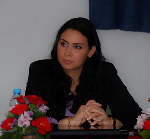
Biography:
Narjiss Akerzoul received her Doctorate of Dental Surgery (DDS) from Mohammed V University of Rabat-Morocco in the year 2011. Later she was working as a General practitioner Dentist in Oral Health Center of Guelmim City, Morocco. Later she completed her Diploma in Biostatistics and Research Methodology during 2014-2015. She has authored and co-authored several International Publications in the field of Oral Surgery and Oral Oncology. She has been an editorial member in Department of Oral and Maxillofacial Surgery of the International Journal of Oral Health and Medical Research (IJOHMR), Reviewer in OMICS GROUP Biomedical Journals. Her research includes Oral Surgery, Oral & Maxillofacial Surgery, Oral Medicine, Oral Oncology, Head & Neck Oncology, Oral Implantology, Oral Infectious Diseases
Abstract:
Introduction: The ameloblastoma is a rare odontogenic tumor of the oral cavity. It affects more the mandible than the maxilla and has a predilection for the posterior region. Although this tumor is benign, its behavior is locally aggressive and requires the most often surgical resection margin. Clinical Observation: A young woman aged 28 has consulted the service of Oral Surgery Department of Rabat, complaining of right mandibular swelling lasting for eight months. Panoramic radiography revealed the presence of a multi-geodic lesion at the right hemi-mandible. A biopsy was performed at the level of the lesion and concluded an ameloblastoma. The patient was subsequently referred to the Maxillofacial Surgery Service of the Hospital of Specialties of Rabat. Two teams, one of maxillofacial surgery and another one for vascular surgery, collaborated to perform a hemi-mandibulectomy with a free fibula flap. Discussion: The indication of radical or conservative treatment should be guided by the anatomical location of the lesion, the radiological aspect and especially macroscopic intra-operative. Conservative treatment is carried out for non extensive lesions with the assurance of a future clinical monitoring. Bone resection with or without immediate reconstruction is needed in extended forms, breaking cortical bone, the periosteum and soft tissue invasiveness. The free fibula flap was the preferred graft for oromandibular reconstruction because of its rich blood supply and the consistency in the size of the fibula bone and stability. The free fibula flap allows skin palette to be obtained that is up to 25 cm long and 5 cm wide. Thanks to the fibula periosteal vascularization, the fibula bone can withstand multiple osteotomies without compromising significantly, when the periosteum is left set. The free fibula flap can be considered a reliable recommended flap with low morbidity and also adapted for future dental rehabilitation
Elaf A Zubaidi
University of Sharjah, UAE
Title: The role of ultrasound therapy on hard and soft tissue wound healing

Biography:
Elaf A Alzubaidi is a clinical tutor at the College of Dental Medicine University of Sharjah. He is graduated with DDS from Ajman University of Science and Technology in year 2009 and his main clinical interest is in prosthodontics. He is an active member of the Wound Healing Research Group at Sharjah and his current research project is regarding investigating the effects of low intensity pulsed ultrasound therapy (LIPUS) on soft and hard tissue healing. He is currently registered as a Post-graduate student in the Master of Dental Science Program at University of Science Malaysia.
Abstract:
A soft tissue wound is a disruption of epithelial surface and may be associated with damage of the undelaying tissues. Hard tissues wound involve fracture of the human skeleton with associated soft tissue injuries. The management of wound healing has begun since ancient times beginning with ancient Egyptians methods of treating wounds, the Ayurveda knowledge in Indian civilization and use of herbs in Chinese medicine. All those techniques emphasize on infection control and supporting tissue regeneration. Today we understand that tissue regenerative principles are based on the tissue engineering triad comprising of the scaffold, cells and signaling molecules. Altering anyone of these elements may enhance wound healing. Studies have shown that delivering ultrasound energy to living cells enhances the cells activity following biomechanical stimulation. Bone injuries can be made to heal faster and more efficient by applying therapeutic ultrasound to the fracture site. Evidences using Low Intensity Pulsed Ultrasound (LIPUS) for bone healing have been proven both in vitro and in vivo animal experiments with encouraging results. Clinical application of LIPUS in dental implantology has recently been investigated. In this pilot study, LIPUS enhances bone formation around loose dental implants as confirmed by radiological investigations, torque value and RFA value. The study showed evidence that LIPUS may be utilized as treatment modality to save dental implant with questionable primary stability during stage I implant placement, with the aim of achieving adequate osseointegration and improves implant success. It is believed that ultrasound energy encourages the production of the growth factors and cytokine that stimulate osteoblasts to produce more osteoid that enable bone regeneration perhaps even in compromised wound healing sites.
Biography:
Will be updated soon.
Abstract:
Introduction: Skeletal fluorosis is endemic in many parts of the world but the reports of skeletal fluorosis are scarce from Arabian Peninsula. Case: We report a case of an 82 years old male who reported in our clinic with joint and bone pains for several months. There were no features of any inflammatory joint disease. He admitted to mechanical back pain after asking leading questions. On examination he had bony swelling in bilateral PIP and DIP joints. He had tenderness over multiple soft tissue areas and his spinal range of motion was restricted. There was no history of fracture. His X-ray cervical spine showed calcification of anterior and interspinous ligaments as well as calcification of posterior longitudinal ligament. His DEXA scan was done as part of clinical workup to look for osteoporosis. The DEXA scan revealed very high bone density with a T-score at Lumbar spine of +7.3. X ray forearm showed calcification of interosseous membrane. His urine and serum sample was evaluated for fluoride levels. The serum fluoride level was 103 microgram/L (normal<30). This patient was diagnosed as chronic skeletal fluorosis. The source of excess fluoride intake was not very evident. Patient had been drinking well water in his village in Yemen 7 year ago. For past few years he has been living in UAE and is drinking tap water. Intermittently he travels to and stays in Saudi Arabia. He has never used fluoridated toothpaste. There is no effective therapeutic agent to treat fluorosis. The main treatment modalilty is to eliminate fluoride intake by provision of safe drinking water and nutritional supplementation with calcium and vitamin D. Conclusion: Fluorosis has been described as a consequence of exposure to high fluoride levels in natural ground water in endemic areas. There are now case reports of patients having fluoride toxicity as a result of excessive tea drinking, use of fluoridated toothpaste and industrial exposure in non-endemic areas as well. It is important to be aware of this condition as it can mimic rheumatological conditions like, Ankylosing spondylitis and diffuse idiopathic skeletal hyperostosis.

Biography:
Muhammad Waheed has obtained his MBBS from Punjab Medical College, Pakistan in 1994. He did his Fellowship (FCPS) in General Surgery from College of Physicians and Surgeons, Pakistan in 2002. He did his Membership (MRCPS Glasgow) as well as Fellowship (FRCS Glasgow) from Royal College of Glasgow, UK. His total clinical experience is about 21 years and in the field of general surgery about 15 years. He has 13 publications in his carrier for research work in general surgery and a case report in various reputed national and international journals. He is also a Reviewer of many articles in the areas of General Surgery. His field of interest is abdominal, trauma and minimally invasive surgery. He has been involved in teaching programs and teaching of clinical students, residents and Post Graduate Students of General Surgery. He has been a counselor of College of Physicians and Surgeons, Pakistan. He has worked as a Consultant General and Laparoscopic Surgeon in MOH, Saudi Arabia. Currently, he is serving as an Associate Consultant General Surgery at King Khalid University Hospital/King Saud University, Riyadh, Saudi Arabia
Abstract:
Hernias are routine general surgical problems that may present in any age group, regardless of the patient’s socioeconomic status. We present a rare case of a complicated ventral hernia leading to short bowel. This is an unusual case and is very rarely reported in the literature. This current case report describes a 54-year-old gentleman who presented to the hospital with a giant strangulated ventral hernia causing massive bowel ischemia and resulting in a short bowel. The literature on large abdominal wall hernias leading to short bowel is reviewed and a discussion on short bowel syndrome is also presented
Khalid Iqbal
Dubai Hospital, United Arab Emirates
Title: A review of unusual and rare causes of early severe neonatal jaundice

Biography:
Khalid Iqbal is working as Neonatologist and Lactation Consultant in NICU, Dubai hospital, Dubai, UAE. He has wide experience of working in neonatal care in Gulf countries. He has published many papers in international journals and has been serving as an editorial board member of one regional journal. He is author of three books on different aspects of neonatal care and children with special interest on infant nutrition
Abstract:
The common cause of early neonatal hyperbilirubinemia is pathological hyperbilirubinemia due to hemolytic disease. Mostly neonatologists rule out the common causes of early severe hyperbilirubinemia, Rh or ABO incompatibilities, G6PD deficiency and occasionally sepsis. The congenital hypothyroidism has been recognized since long as a cause of prolonged jaundice but early neonatal severe hyperbilirubinemia requiring exchange transfusion is rarely considered to be caused by congenital hypothyroidism. We managed a case of severe early neonatal hyperbilirubinemia (33.9mg/dl) who required twice exchange transfusion and investigations proved a case of congenital hypothyroidism and treated with Thyroxin and follow up in clinic showed no neurological deficit. This is a very rare case where early hyperbilirubinemia was severe enough requiring exchange transfusions and could not find similar case report. There are related reports from different parts of the world. One study reported twelve cases in which congenital hypothyroidism were associated with significant neonatal jaundice. Out of twelve, three neonates presented with excessively severe jaundice in early neonatal period within first week of life and maximum bilirubin level was 22mg/dl. Another study had reported five cases of congenital hypothyroidism with severe early neonatal hyperbilirubinemia within five days of age and maximum bilirubin was 25.8mg/dl. However, it is unusual to have such severe early neonatal hyperbilirubinemia requiring exchange transfusion caused by congenital hypothyroidism. Because usually the features of congenital hypothyroidism are minimal at this early neonatal age, it would be ideal to perform thyroid function tests in all babies with unexplained hyperbilirubinemia. If screening of newborns for hypothyroidism is not the routine, serum thyroxin and thyrotropin should be measured in any infant who present with unexplained unconjugated hyperbilirubinemia. This is of profound importance because congenital hypothyroidism is one of the preventable causes of mental retardation if treated early preferably within 2 weeks of life
Serag Bensar
Liver research group at the University of Sheffield, United Kingdom
Title: The influence of rodent hepatic stellate cells in colorectal liver metastases by using metastatic and non-metastatic human colorectal cancer cell lines
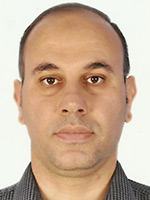
Biography:
Serag Bensar is interested in medical education and teaching. He involved in teaching fourth and fifth years medical students at Garyounis University Medical School (Currently Benghazi University Medical School) the genuine recent name after 17 February revolution, as well as, Omar Al-mokhtar University. This involves the clinical teaching during the student’s attachment to the general surgery department. These teaching sessions follow a set syllabus and utilise various methods I am familiar with, such as ward-based teaching and based learning. In 2007 he started his post graduate research training at Royal Hallamshire hospital/ Sheffield/UK. He commenced with the liver metastases research group to conduct a number of experiments on the interaction between primary quiescent hepatic stellate cells (HSCs) and colon cancer cells. During that period a number of laboratory techniques have been learned, such as tissue culture, histological staining, images of florescence microscopy analysis, qPCR, western blotting technique and hepatic stellate cells isolation and identification from the rat liver. This project was supervised by Dr NC. Bird (Lecturer at the University of Sheffield Medical School). Our aims were to create a module of primary quiescent HSCs using Matrigel culture and then, illustrate the influence of the colon cancer cell lines (metastatic and non-metastatic) on the quiescent HSCs through a co-culture study. This study has published on Hamdan Medical Journal UAE
Abstract:
Hepatic stellate cells (HSCs) are playing a role in the invasiveness of cancer cells through transdifferention into myofibroblast-like cells, which are characterized by the expression of alpha-smooth muscle actin (α-SMA). In order to explore whether the HT-29 metastatic colon cancer cell line and Colo-741 non-metastatic colon cancer cell line effect on HSCs via its activation, transdifferentiation and survival. The stellate cells have been isolated and identified by vitamin A autofluorescence, Oil red O lipid staining and glial fibrillary acidic protein (GFAP) expression. Following an identification, the duration of qHSC activation was determined using immunocytochemistry (ICC) via sequential staining of α-SMA and Oil red O at days 1, 3 and 5. ICC was conducted to quantitatively examine the expression of α-SMA in the metastatic and non-metastatic colon cancer cell lines. α-SMA expression was observed for a period of 10 days. We found the expression of α-SMA at day 1 in the HT-29 co-culture, which increased consistently throughout the duration of the experiment. In contrast, it was observed only on days 7 and 10 in the Colo-741 co-culture. The Ki-67 proliferation assay was investigated on day 1 of qHSCs co-culture with HT-29 or Colo-741 conditioned medium that determine the stellate cells had proliferated in the HT-29 conditioned medium, whereas the Colo-741 conditioned medium did not show any changes. In addition, caspase-cleaved fragment of cytokeratin (CK)-18 in the qHSCs of these co-cultures noted that Colo-741 were found to be significantly proapoptotic. These findings show further information for a positive role of stellate cells in the metastatic process instead of simply acting to provide a pseudocapsule between the tumour and liver parenchyma, as previously thought
Sukru Atakan
Bilkent University, Ankara, Turkey
Title: Serum anti-tumor antibody profiling of SCLC by protein arrays has superior diagnostic power over ELISA
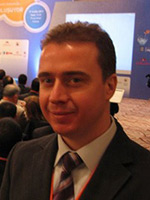
Biography:
Sukru Atakan is a PhD student at Bilkent University Department of Molecular Biology and Genetics. His PhD studies are focused on autologous antibody biomarker discovery and validation. He is also responsible for business and strategy development at PRZ BioTech, a spin-off company specialized in cancer diagnosis. He has been an entrepreneur in Biotechnology for the last 5 years and is the cofounder of 5 start-ups
Abstract:
Aim- The discovery of tumor antigens capable of eliciting autologous antibody responses has not only illuminated the immunobiology of cancer but paved the way to immunotherapy protocols and commercial kits for cancer diagnosis being developed today. Screening of high density protein macro arrays is a powerful methodology to identify novel autologous antibody biomarkers. Validation of identified biomarkers with a quantifiable method like ELISA is very important for their application in clinical screenings. However, as will be explained in this talk, we find that the accuracy of protein arrays, when quantitatively evaluated, is significantly superior over ELISA. Experimental procedures- Sera obtained from fifty patients with either small cell lung cancer (SCLC), or healthy individuals were used to screen protein arrays (Source Bioscience) composed of 180 unique proteins from fetal brain, at a dilution of 1:500 and visualized using the Life Technologies’ WesternDot625® system. Proteins from selected clones were HisTag affinity purified for ELISA. ELISA results, were compared to protein array results obtained using Photoshop CS1 Histogram based quantification (PS). Sensitivity and Specificity calculations were performed using the Monte Carlo algorithm. Results- SOX2, p53 were among the 180 individual antigens and have the highest individual Sensitivity and Specificity values by all 3 types of evaluations; 1) ELISA, 2) Empirical evaluation, 3) PS. SOX2 has the following Sensitivity and Specificity values with these evaluation methods; 1) Sens: 25%, Spec: 98%, 2) Sens: 34%, Spec: 98%, 3) Sens: 43%, Spec: 98% whereas p53 has the following Sensitivity and Specificity values with these evaluation methods; 1) Sens: 16%, Spec: 98%, 2) Sens: 6%, Spec: 100%, 3) Sens: 22%, Spec: 96%. Combined evaluation of SOX2 and p53 have the following Sensitivity and Specificity values with these evaluation methods; 1) Sens: 36%, Spec: 96%, 2) Sens: 36%, Spec: 98%, 3) Sens: 82%, Spec: 90%. Discussion- Our results indicate PS method has superior sensitivity over ELISA and empirical evaluation of protein array results which depicts diagnostic value in clinical screenings. Our future perspective is to combine PS with identification and validation of new autologous antibodies to be utilized for diagnosis of SCLC and other cancers

Biography:
H R Chitme has completed his PhD from MLB Medical College, Bundelkhand University, India. He is the Professor of Pharmacotherapeutics at Oman Medical College, an academic partner of West Virginia University, USA. He has more than 15 years of teaching and research experience in India and Oman. He has published more than 50 research papers in reputed journals, presented about 75 articles at different platforms and has been serving as an Associate Editor-in-Chief of Pharmtecmedica, Advisor and Editorial Board Member of many reputed journals. He has delivered invited lectures at many national and international conferences. He has organized many National and International conferences and chaired number of scientific sessions
Abstract:
A 29-year-old male patient having eight-year history of ulcerative colitis with multiple ulcerative colitis exacerbations is on maintenance therapy. Colonoscopy established pancolitis extending from cecum to rectum with the presence of granularity, ulcers, hemorrhage and moderately active disease. It is also noted with hyperplastic mucosal nodules in the prolapsing rectum. This patient was diagnosed with ulcerative colitis only in 2001 treated in the past with mesalamine, azathioprine, adalimumab, infliximab, prednisone and hydrocortisone with antibiotic rifaximin and albendazole with an inadequate improvement in his condition. He is still suffering from multiple watery stools with blood and mucus sometimes and complains of abdominal distention with excessive flatus. Colonoscopy reconfirms active pancolitis with multiple small to medium size ulcers. He refused to go for colectomy advised by consultant. Therefore, it was recommended to change the current adalimumab to weekly infliximab with current azathioprine and mesalamine. Follow-up laboratorial investigation reveals that his hemoglobin, hematocrit, along with MCV, MCHC are lower than normal and random blood glucose, platelet count, RDW are higher than the normal. However, overall symptoms and quality of life of the patient have improved compared to earlier therapies. This case demonstrates and supports that combination of weekly infliximab infusion and oral azathioprine while maintaining remission with mesalazine may be beneficial in inducing remission rapidly, even in moderate cases of steroid-dependent ulcerative colitis
Ossama Osman
United Arab Emirates University, UAE
Title: Infanticide attempt by a post-partum depressed mother
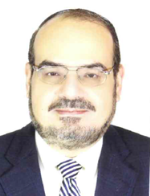
Biography:
Osman Osman is an Associate Professor of Psychiatry and Behavioral Sciences. He is American Board certified and was elected a fellow of the American Psychiatric Association. His residency training in the USA was at SIU-in Illinois and his research fellowship in Clinical Psychopharmacology was at the National Institute of Mental health (NIMH) in Bethesda. Extensive academic career both in the U.S. and in the Middle East focused on bridging clinical research and practice through community clinical, research, and educational program development. He has many peer-reviewed publications/book chapters. He is the past president of American-Arab Psychiatric Association, member of scientific/executive councils for the Arab Board of Psychiatry and chairperson for its Committee on Curriculum, Accreditation and Credentialing
Abstract:
To our knowledge, this is the first case report from an Arab culture of an infanticide attempt by a depressed mother towards her 4 months old infant. The attempt failed after intervention by a family member who noticed the mother covering up the face of the infant with multiple layers of blankets. She admitted to the infanticide attempt and was transported to the emergency room for assessment and treatment of her postpartum depression. We present this case to heighten awareness among physicians for the need for careful mental health assessment of their women patients in the postpartum period. This becomes particularly critical for those women with known risk factors which increase their vulnerability for a serious infant-mother relationship disorder
Hanadi A Fatani
King Faisal Medical City, KSA
Title: Calcitonin secreting neuroendocrine carcinoma of larynx with solitary papillary thyroid carcinoma: A case report
Biography:
Dr. Hanadi Fatani has completed M.B.B.S and attained higher pathology training in King Saud University, Riyadh Kingdom of Saudi Arabia. She achieved her fellowship in Head & Neck Pathology in MD Anderson Cancer Center, Houston, United States of America. She completed her master degree in Tissue Banking and Advanced Therapy in University of Barcelona and acquired Diploma in Health Care Management and Leadership in United Kingdom. Currently, she is the Chairperson in Tissue Committee Meeting, Head of Cytopathology Section and Consultant Pathologist Subspecialty in Head & Neck in Anatomic Pathology Department under Pathology & Clinical Laboratory Medicine Administration in King Fahad Medical City, Riyadh, Saudi Arabia. She has published 17 Head & Neck publications in various National & International Scientific Journals, participates as co-author in 4th Edition WHO Classification of Head & Neck Tumors and multiple research project in Head & Neck
Abstract:
Context: Primary neuroendocrine (NET) tumors of the larynx are rare in occurrence. Majority of case reports of NET larynx are associated with medullary carcinoma thyroid. In this backdrop, we report a case of NET larynx associated with solitary papillary thyroid carcinoma. Case report: A 51 year old female presented with 2 months’ history of sore throat, change in voice, odynophagia and left ear pain. On clinical examination, a non tender, firm, right sided thyroid nodule along with non tender, right cervical lymph node was found. Fiber optic endoscopy showed irregularity in the tip of epiglottis. CT/ PET scan showed thickening of epiglottis with enhancement after intravenous contrast and a small right enhancing lymph node measuring 1.5 cm. Laser resection of the epiglottis was carried out and histopathology revealed it as moderately differentiated neuroendocrine carcinoma. A week later the patient underwent total thyroidectomy with bilateral neck dissection. Immunohistochemistry was performed on epiglottis and lymphnode section with appropriate positive and negative control which showed CKpan+, Syn+, Chr A+, CEA+, Calcitonin +, CD56-, CK7-, CK20- and P63-. Ki 67 was reactive in about 10% of the neoplastic cells. The histopathology of thyroid section revealed a micro papillary thyroid carcinoma that was calcitonin negative. Following thyroidectomy and neck dissection, the patient underwent octreotide scan which was negative and the serum calcitonin level was found to be high (12 pg/ml, ref<8). Currently the patient is under clinical surveillance with no evidence of recurrent disease. Conclusion: To the best of our knowledge, we report the first case of primary calcitonin secreting neuroendocrine carcinoma of the larynx metastasizing to neck lymph nodes and associated with a solitary papillary thyroid carcinoma
Sewefy Alaa M
Minia University Hospital, Egypt
Title: Emergency pyloric preserving pancreaticoduodenectomy for isolated 5th degree blunt duodenal trauma with double loop (Roux en Y) technique
Biography:
Will be updated soon!!!
Abstract:
Pancreaticoduodenal injuries are often associated with complicated treatment strategies. Severe pancreaticoduodenal injuries involve a significant mortality rate ranging from 10 to 36%. In massive injury of proximal duodenum and or head of pancreas with destruction of the ampulla and proximal pancreatic duct, distal common bile duct may preclude reconstruction, in addition, because of duodenum and head of pancreas have the same blood supply it is impossible to make resection of one without ischemia of the other, in this situation pancreaticoduodenectomy is required. We present a case of male patient 35 years old presented to our ER (emergency room) by MVA (motor vehicle accident), the patient received ATLS (acute trauma life support) and was hemodynamacally stable, abdominal examination revealed tenderness all over the abdomen, abdominal US (utrasonography) was done and revealed mild free abdominal collection, plain X-ray image revealed free air under diaphragm, other emergency investigations were normal. The decision was abdominal exploration, after preparation of matched blood and revealed degloved 2nd part of the duodenum with no other organ injury. The decision was pancreaticoduenectomy and to decrease the blood loss and operative time we did PPPD (pyloric preserving pancreaticoduodenectomy) but with double jejunal loop to completely divert the biliopancreatic limb from food limb. The case passed with very good postoperative outcome only the patient developed incisional hernia.
Biography:
Arshad Khushdil is currently working as a Consultant Pediatrician in Combined Military Hospital, Pakistan. He did his FCPS in Pediatrics from the College of Physicians and Surgeons Pakistan in 2013. He has published 09 research papers in national and international journals.
Abstract:
Neurenteric cyst is a rare duplication cyst of the spine which accounts for 0.7% to 1.3% of the spinal axis tumors. It is associated with abnormalities of the vertebral bodies in 50% of the cases but very rarely it is associated with upper thoracic diastematomyelia. Diastematomyelia is a form of spinal dysraphism where the spinal canal is split by a fibrous, cartilaginous or bony septum into two portions. Both these lesions appear to have same embryologic origin but their coexistence is very rare. Here we are presenting a child who presented with persistent cough and respiratory distress. Upon investigation it was found that the child has posterior mediastinal neurenteric cyst and upper thoracic diastematomyelia along with other anomalies of the vertebral bodies. It is a very rare presentation and no such case has been reported in literature.
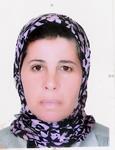
Biography:
Will be updated shortly!!!
Abstract:
Burkitt’s lymphoma is rare forms of malignant non-Hodgkin lymphoma mature B-cells. In Europe and North America, half of non-Hodgkin lymphomas are seen in children and about 2% of those in adults. Indeed, two incidence peaks exist: The first is in childhood/adolescence/early adulthood and the second after 40 years. Male individuals are preferentially affected. Patients infected with the HIV virus and that the antiviral therapy is not optimal are particularly susceptible to developing Burkitt's lymphoma. Two forms exist: One is called "endemic" (sub tropical Africa) and linked to the Epstein Barr Virus (EBV). Diagnosis is based on biopsy of a mass or puncture of an effusion or bone marrow revealing the presence of tumor cells. The staging is performed using imaging (mainly ultrasound and scanner). Differential diagnosis includes other forms of child abdominal tumors (such as Wilms' tumor and neuroblastoma. The management should be done in a specialized center in oncology/hematology. The treatment is based on chemotherapy which is some months but intensive. Our clinical observation reports the case of a girl aged 13 who presented with severe oral manifestations budding Burkitt lymphoma having evolved after 2 years of treatment
Kriti Singh
Jawaharlal Nehru University, India
Title: “From me to HIVâ€: A case study of the community experience of donor transition of health programs
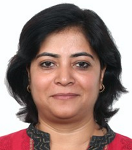
Biography:
Kriti Singh is doing her PhD from Jawaharlal Nehru University (JNU, New Delhi) and is also working as independent consultant and researcher. The study was done along with Department of International Health, Johns Hopkins Bloomberg School of Public Health, and Amaltas a research consultancy firm based in New Delhi, India. She has published more than 4 papers in reputed journals
Abstract:
Background- Avahan, a large-scale HIV prevention program in India, transitioned over 130 intervention sites from donor funding and management to government ownership in three rounds. This paper examines the transition experience from the perspective of the communities targeted by these interventions. Methods- Fifteen qualitative longitudinal case studies were conducted across all three rounds of transition, including 83 in-depth interviews and 45 focus group discussions. Data collection took place between 2010 and 2013 in four states: Andhra Pradesh, Karnataka, Maharashtra and Tamil Nadu. Results- We find that communication about transition was difficult at first but improved over time, while issues related to employment of peer educators were challenging throughout the transition. Clinical services were shifted to government providers resulting in mixed experiences depending on the population being targeted. Lastly, the loss of activities aimed at community ownership and mobilization negatively affected the beneficiaries’ view of transition. Conclusions- While some programmatic changes resulted in improvements, additional opportunity costs for beneficiaries may pose barriers to accessing HIV prevention services. Communicating and engaging community stakeholders early on in future such transitions may mitigate negative feelings and lead to more constructive relationships and dialogue
Saliha Chbicheb
Mohammed V University, Rabat-Morocco
Title: “Could the HHV8 induce the occurance of Kaposi Sarcoma?
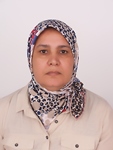
Biography:
Dr. Saliha Chbicheb did her Internship in Periodontology Oral surgery, Pediatric dentistry, Prosthodontics and Orthodontics for a period of 2 years. In 1996 she received Doctorate in Dental Surgery from University of Casablanca, Morocco. From 1997 she was working as a Faculty of Dentistry at University of Rabat-Morocco. She is an author of many national and International publications in the field of Oral surgery, Oral Medicine and Oral Oncology. From 2011, she was promoted as a Professor at University of Rabat-Morocco. She was also a member of The French Society of Oral Medicine and Oral Surgery, The Moroccan Society of Oral Medicine and Oral Surgery and also served as a Member in the research project of cancers of the oral cavity
Abstract:
Kaposi sarcoma (KS) is a multifocal angioproliferative disorder of vascular endothelium, usually described in HIV positif patients, and primarily affecting mucocutaneous tissues with the potential to involve viscera. Four clinical variants of classic, endemic, iatrogenic, and epidemic KS are described for the disease, each with its own natural history, site of predilection, and prognosis. All forms of Kaposi sarcoma may manifest in the oral cavity and Kaposi sarcoma–associated virus (KSHV), also known as Human Herpes Virus type 8, appears essential to development of all clinical variants. In the absence of therapy, the clinical course of KS varies from innocuous lesions seen in the classic variant to rapidly progressive and fatal lesions of epidemic KS. Our case report provides an overview of clinical aspects, pathogenesis and treatment about a non HIV positif patient presenting the classic form of KS related to HHV8
Mohd Saif Khan
Tata Memorial Hospital, India
Title: Difficult weaning off ventilator following head and neck surgery
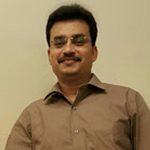
Biography:
Mohd Saif Khan has completed his MBBS at Coimbatore Medical College, India. He has specialized in Anesthesiology at Lady Hardinge Medical College, New Delhi. He has migrated to Pondicherry in South India, where he has completed Fellowship in Critical Care at Jawaharlal Institute of Postgraduate Medical Education and Research. He has cleared Diplomate of National Board Exam (Anesthesiology) in 2013. After completion of Fellowship in 2013, he has served as an Assistant Professor in Department of Anesthesiology at Pondicherry Institute of Medical Sciences, a unit of Madras Medical Mission. He was accepted for DM (Critical Care Medicine) program in August 2015, at Tata Memorial Hospital, the best cancer research centre in Asia. He has conducted various studies in the fields of obstetric critical care and epidemiology of nosocomial infections, which were presented in many International, National and State conferences and society proceedings, two of which received Best Poster Awards at Bangalore and New Delhi. He has seven publications to his credit in various National and International Medical journals of repute
Abstract:
A 76 year old hypertensive lady, a case of carcinoma of oral cavity underwent modified type-2 neck dissection and reconstruction with a pectoralis major myocutaneous flap. She developed necrosis of flap; hence, reconstructive surgery with a free radial artery graft was scheduled. But she was rendered unfit for this procedure as she was maintaining a low saturation of 90-91% on room air. Definitive surgery was deferred and a debridement of the necrosed graft with skin grafting to cover the defect was performed. She was shifted to intensive care unit and continued to require ventilator support and developed recurrent basal collapse of lungs and pneumonia. Despite complete treatment of pneumonia, she was difficult to wean off ventilator. On ultrasound of thorax something was discovered which cleared all the qualms regarding her low preoperative saturations before second surgery and difficult weaning thereafter
Joslin Dogbe
Kwame Nkrumah University of Science and Technology, Ghana
Title: Cancer incidence in Ghana, 2012: Evidence from a population-based cancer registry
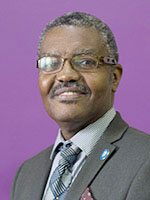
Biography:
Joslin Alexei Dogbe completed his BSc, MB ChB and MPH from the Kwame Nkrumah University of Science and Technology (KUNST), Kumasi-Ghana and his Fellowship in Pediatrics from the West African Postgraduate Medical College. He further pursued a Diploma in Project Design and Management from the Liverpool School of Tropical Medicine and the Komfo Anokye Teaching Hospital (KATH) in Ghana. He is a Public Heath Physician and an Academic Clinical Consultant in Pediatric Neurology in the Department of Child Health at the KATH. He is the current Chair of the Editorial Advisory Board of the KATH Public Health Bulletin and the Kumasi Cancer Registry. He is a Board Member of the Ghana Cancer Centre and the Ghana Biomedical Convention. He is also the founding member of the Centre for Disability and Rehabilitation Studies in the Department of Community Health at KNUST, Ghana
Abstract:
Population-based Cancer Registries are not common in Africa despite their usefulness in informing cancer prevention and control programs. In Ghana, data and research on cancer have focused on specific cancers and have been hospital-based with no reference population. The Kumasi Cancer Registry (KCR) was established as the first Population-based Cancer Registry in Ghana in 2012 to provide information on cancer cases seen in the city of Kumasi. This paper reviews data from the KCR for the year 2012. The reference geographic area for the registry is the city of Kumasi as designated by the 2010 Ghana Population and Housing Census. Data was from all Clinical Departments of the Komfo Anokye Teaching Hospital (KATH), Pathology Laboratory Results, Death Certificates and the Kumasi South Regional Hospital. Data was abstracted and entered into Canreg 5 database. Analysis was conducted using Canreg 5, Microsoft Excel and Epi Info Version 7.1.2.0. The majority of cancers were recorded among females accounting for 69.6% of all cases. The mean age at diagnosis for all cases was 51.6 years. Among males, the mean age at diagnosis was 48.4 compared with 53.0 years for females. The commonest cancers among males were cancers of the Liver (21.1%), Prostate (13.2%), Lung (5.3%) and Stomach (5.3%). Among females, the commonest cancers were cancers of the Breast (33.9%), Cervix (29.4%), Ovary (11.3%) and Endometrium (4.5%). Histology of the primary tumor was the basis of diagnosis in 74% of cases with clinical and other investigations accounting for 17% and 9% respectively. The estimated cancer incidence Age Adjusted Standardized Rate for males was 10.9/100,000 and 22.4/100, 000 for females. Establishing more Population-based Cancer Registries will Strengthen Public Health Surveillance and will help improve data quality and national efforts at cancer prevention and control in Ghana
Saliha Chbicheb
Mohammed V University of Rabat, Rabat-Morocco
Title: The Enlargement of the mandibular Canal revealing a Non Hodgkin's Lymphoma
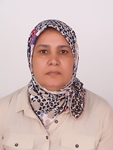
Biography:
Dr. Saliha Chbicheb did her Internship in Periodontology Oral surgery, Pediatric dentistry, Prosthodontics and Orthodontics for a period of 2 years. In 1996 she received Doctorate in Dental Surgery from University of Casablanca, Morocco. From 1997 she was working as a Faculty of Dentistry at University of Rabat-Morocco. She is an author of many national and International publications in the field of Oral surgery, Oral Medicine and Oral Oncology. From 2011, she was promoted as a Professor at University of Rabat-Morocco. She was also a member of The French Society of Oral Medicine and Oral Surgery, The Moroccan Society of Oral Medicine and Oral Surgery and also served as a Member in the research project of cancers of the oral cavity
Abstract:
Introduction- Non Hodgkin’s lymphoma is a Malignant disease, affecting the lymphatic system and developed at the expense of a lymphoid cell line, but different from Hodgkin's disease in its natural history, microscopic appearance, and its therapeutic management. Non-Hodgkin's lymphoma has the propensity to affect non-lymphoid tissues including oral tissues. Primary non-Hodgkin's lymphoma of the mandible mistreated as chronic periodontitis with diffuse enlargement of the mandibular canal associated to hypesthesia, remains rarely reported in the litterature. Case Report- A 35-year-old patient presented with a painful swelling on the left side of the mandible with a clinically chronic periodontitis associated with hypesthesia. A panoramic radiograph showed a diffuse uniform enlargement of the left mandibular canal. Histological examination revealed that the lesion was a primary intraosseous non-Hodgkin's lymphoma of the mandible. Discussion Non Hodgkin’s Lymphoma mainly affects patients in the fifth decade and more, with a male predilection. To our knowledge, there have been only several reports of PNHL associated with widening of the mandibular canal. With the introduction of very sophisticated diagnostic imaging techiques, such as cone beam CT, and improving the teaching process by adding Non Hodgkin’s Lymphoma to the list of primary mandibular malignancies, clinicians should be aware of eliminating the delay in the diagnostic process. However, conventional panoramic radiographs showed remarkable features of PNHL, emphasizing the “gold standard†of a pre-treatment radiograph for every dental case, enabling early diagnosis of rare bone lesions and tumours. Radiographic examination is extremely important in pathologies of the jaw that encroach upon adjacent anatomical structures. Conclusion- Although radiographic features are often a complementary exam to confirm a clinical problem, they can reveal a hidden latent malignant process, but also even be the first alarming sign leading to an early diagnosis of non Hodgkin’s lymphoma
Umanath Nayak
Apollo Hospitals, India
Title: P53 nuclear stabilization and associated FHIT loss in carcinoma tongue

Biography:
Umanath Nayak is the chief of Head & Neck cancer services at the Apollo Hospitals, Hyderabad. Apollo Hospitals is the leading private hospital chain in India and manages over 25 hospitals in India and abroad. He is a Fellow of the University of California, Davis and has over 20 years’ experience in managing and treating oral cancers. He is trained in robotic thyroid surgery from EEC, Paris and is the recipient of two UICC fellowships. He has 15 publications to his credit and is the author of three books
Abstract:
Oral squamous cell carcinoma represents a major health problem in India. Two common sites for oral cancers are the gingivo-buccal complex and oral tongue. Gingivo-buccal cancer has been clinically and epidemiologically proved to be related to the wide-spread habit of tobacco chewing prevalent in the country. Though squamous cell carcinoma of the tongue (SCCT) is also believed to be associated with tobacco use similar to other HNSCC subtypes, an increased incidence in the young and in individuals with no history of smoking/tobacco chewing and alcohol consumption gives rise to the speculation that genetic factors may have a role to play in their causation. In addition, young patients with SCCT have frequent loco-regional recurrence and the disease appears to be more aggressive with respect to its clinical and biological behavior and is known to exhibit skip metastasis. Despite advances in therapy, the SCCT five year survival rate has not improved in the last few decades. All these factors make SCCT a unique HNSCC subtype and yet molecular genetic studies designed specifically for SCCT have been rare; most studies have been restricted to a single prognostic marker and/or a small cohort of patients. We have conducted comprehensive molecular genetic and clinico-pathological analyses for one hundred and twenty one SCCT samples; results revealed significant association of p53 stabilization with age of onset, FHIT loss and poor survival. Younger age (≤45 years) and FHIT loss were significantly associated with p53 nuclear stabilization especially in patients with no history of tobacco use. More importantly, samples harboring mutation in p53 DNA binding domain or exhibiting p53 nuclear stabilization, were significantly associated with poor survival. Our study has therefore identified distinct features in SCCT tumorigenesis with respect to age and tobacco exposure and revealed possible prognostic utility of p53
Biography:
Arshad Khushdil is currently working as a Consultant Pediatrician in Combined Military Hospital, Pakistan. He did his FCPS in Pediatrics from the College of Physicians and Surgeons Pakistan in 2013. He has published 09 research papers in national and international journals.
Abstract:
Neurenteric cyst is a rare duplication cyst of the spine which accounts for 0.7% to 1.3% of the spinal axis tumors. It is associated with abnormalities of the vertebral bodies in 50% of the cases but very rarely it is associated with upper thoracic diastematomyelia. Diastematomyelia is a form of spinal dysraphism where the spinal canal is split by a fibrous, cartilaginous or bony septum into two portions. Both these lesions appear to have same embryologic origin but their coexistence is very rare. Here we are presenting a child who presented with persistent cough and respiratory distress. Upon investigation it was found that the child has posterior mediastinal neurenteric cyst and upper thoracic diastematomyelia along with other anomalies of the vertebral bodies. It is a very rare presentation and no such case has been reported in literature.
